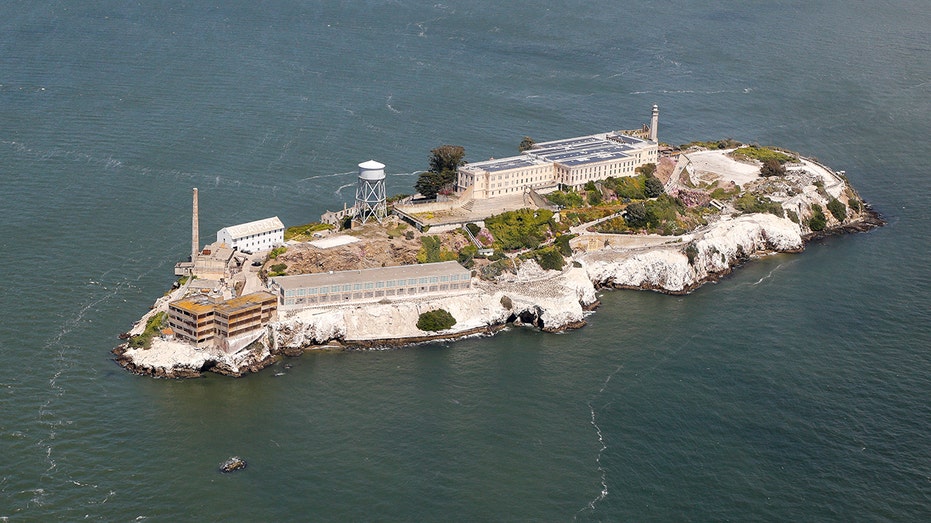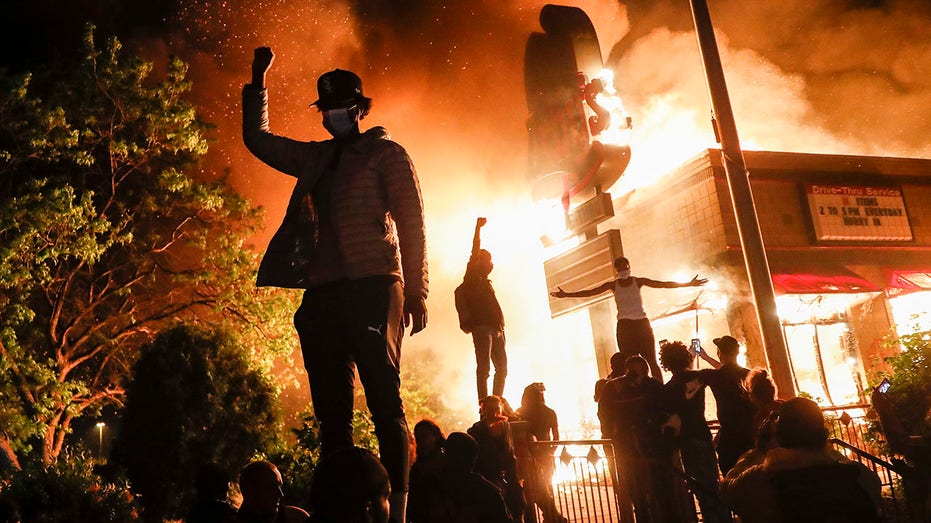Grading Trump’s Economy at 100 Days: Media Business Experts Say The President Is Failing
Markets: The president's inconsistent tariffs have been "an unmitigated disaster," one economist tells TheWrap The post Grading Trump’s Economy at 100 Days: Media Business Experts Say The President Is Failing appeared first on TheWrap.

How has President Trump handled the economy in his first 100 days back in the White House? Multiple experts in the business of media and entertainment spoke to TheWrap and graded the president poorly, with one giving the president an “F” and another calling his tariff policy “an unmitigated disaster.”
Since the president was inaugurated on Jan. 20, three major stock indexes — the Nasdaq, Dow Jones, and S&P 500 — have all declined at least 6.30%. Heading into Friday, the markets have calmed down a bit recently, with the S&P 500 declining 1.16% and the Dow Jones declining 3.48% since “Liberation Day,” while the tech-heavy Nasdaq is actually up 0.62%.
The tariffs led to a surge in imports during the first quarter as companies looked to get products into the country before the new fees hit; that was a major contributor to U.S. GDP declining for the first time in three years. And to be fair to the president, inflation has cooled off.
TheWrap asked a handful of experts to grade the president’s economy since he returned to the White House. Here is what they had to say:
Peter Horan,
Founder, Horan MediaTech Advisors
Grade: F
“He inherited a strong stock market, a growing economy and an inflation rate that was returning to a sustainable range. He has literally snatched defeat from the jaws of victory,” Horan told TheWrap.
On Wall Street and consumer confidence: The stock market has had the worst decline during the first hundred days of a presidency in over 50 years. And consumer confidence is dropping like a rock. The pain that consumers are feeling and will continue to feel are also mirrored by small businesses and even some large businesses.”
On DOGE cuts and unemployment: “The unemployment rate is currently reasonable—about 4%—but will increase as the effects of tariffs trickle through the greater economy. UPS just laid off 20,000 because of an anticipated drop in business from Amazon. Car plants have closed. And, of course, there are the tens of thousands of people thrown out of jobs because of the DOGE cuts. Not only the federal workers but people who work in universities and hospitals whose grants have been eliminated.”
Macro take: “Above everything else, Trump has caused an evaporation of confidence in the sanity and stability of the United States.”
Douglas Holtz-Eakin
Economist and President of the American Action Forum
Grade: C+/D-
Tariffs: “The tariffs, I think, are an unmitigated disaster, both the substance and the rollout. This sort of on again, off again [approach], the uncertainty it has created, [and] the scale of the tariffs is the largest in 100 years. It’s had an enormous impact on the economy. I just think that dominates the sort of review the first 100 days — and that’s not a good story.”
Tax Policy: “Jury is out on on tax and fiscal policy process. You know, we’ll see. No bad news there, but no good news yet.”
On Deregulation: “He’s been fine on deregulation. He’s got in place the same essential team and techniques that he had in 2017, [and] he’s given agencies targets that say, for every one regulation in 10 go out, and he’s included a broader definition of what can be in that 10, so they could probably get to that. He told them to impose fewer costs than they did in 2017 agency by agency. So that’s what he promised to do, and he’s doing it. It seems to be on track.”
On Tariffs weighing down Trump’s grade on the economy: “It’s 100% self-inflicted damage. It’s not even like external events happen and you can [point] to it. I’m not a big fan of that tariff strategy; I don’t think he’s going to get, in the long run, the benefits that make this kind of pain worth it.”

Kevin Klowden
Executive Director, Milken Institute Finance
Grade: Incomplete
On uncertainty: “Overall, it is impossible to give a picture of the impact of President Trump’s first 100 days, not because there aren’t some clear impacts, but because it is unclear what the ultimate economic outcomes are. A great deal depends on the outcome of the President’s suspension of the reciprocal tariffs, and any ongoing negotiations. What we do see in the meantime is that the impacts of the Chinese tariffs and trade war are real, but in many ways, even predate the president’s inauguration. Companies massively expanded their orders since the election of key components and parts, fully taking President Trump’s word on a trade fight with China. However, those supplies can only last so far, and with a hold on imports, not just from China, but in many cases for materials covered by other tariffs, ships are arriving empty at the US West Coast ports, and UPS has already announced massive layoffs.”
On DOGE cuts: “There is a very real impact happening from all of the government layoffs, which are not just concentrated in D.C., but are spread throughout the U.S. This, combined with a drop in consumer confidence, is showing clear short-term impacts that we should expect to see play out very soon, even if the President does deliver on his promised trade deals to boost the economy in the medium-term.”
John Lonski
The Lonski Group President and former Moody’s chief economist
Grade: C overall/D on tariffs/B on domestic policy
On tariffs: [Trump has] created a lot of chaos and confusion and uncertainty that may manifest itself in the not too distant future, with a drop in business capital spending as well as a decline in hiring activity that would be of concern. The problem with tariffs is that if Trump’s aim was to restore manufacturing capacity in order to assure an adequate level of national security, tariffs may not have been the only or the best way of achieving this goal. He could have used tax incentives.
If Trump wanted to get a B or an A in the course, what he should have done is he should have directed the tariffs, mostly in China, restrictions on trade chiefly on China, while at the same time, making it more attractive for US companies to import from friendlier countries, such as Taiwan, European countries, Japan. The idea of other emerging market countries putting more pressure on China to level this playing field, as far as international trade is concerned, and also putting more pressure on China to reduce its militaristic stance towards neighboring countries, as well as the United States. So the methodology that Trump has employed on the international front leaves a lot to be desired.
Did it make any sense to talk about annexing Canada? No, it’s a friendly trading partner, that was counterproductive. Did it make sense to talk about annexing or buying Greenland and doing whatever it takes to do so? No, it didn’t. That was self defeating. He should have taken a more surgical country by country, commodity by commodity approach to tariffs, than just having a blanket imposition of tariffs that he’s been changing here or there, depending upon what the lobbyists are asking for in Washington.
The way they were presented and implemented thus far has sown a lot of confusion, chaos and uncertainty that is perhaps weighing on the ability of businesses to plan ahead, damaging the ability of businesses to plan capital spending and staffing levels might indeed take its toll. Jobs may begin to disappear and tariffs are a tax. There’s no question they will increase the cost of doing businesses. They’ll increase the cost of business operations. And if that’s the case, businesses may try to cut costs elsewhere and a prime area for cost cutting would be staffing levels, compensation and so on.
On consumer spending: Consumer spending was better than expected because you got off to a rough start the first quarter and it really picked up in March. Of course, one of the reasons why consumer spending took off in the month of March is because consumers were advancing their purchases into March in order to avoid possible, possibly higher prices linked to the imposition of tariffs. So it may slow. I would imagine that it will slow down somewhat consumer spending from the pace in March. It’s still doing. My impression is still doing fairly well, better than expected. Business investment spending was strong, and business investment spending should continue to do well if Trump can get his tax package passed by Congress.
On GDP: A lot of people I said,’ Oh, we declined by three tenths of a percent. We’re in danger of going into a recession.’ You’ve got to realize that imports subtracted by itself about five percentage points from first quarter real GDP growth. And I would imagine a lot of these imports that were going to take place later in 2025 were advanced the first quarter. So you’re going to have fewer imports than otherwise later in second quarter and third quarter because of this change in behavior, and as you shrink imports in the second and third quarter and so on, that’s going to provide a boost of real GDP. So that’s why that number was misleading.
On labor market: “Trump was up to a point willing to tolerate a weaker equity market and weaker bond market as a cost of trying to implement his tariff policy. However, if you begin to see a significant rise by the unemployment rate, if payrolls are in danger of shrinking and consumer spending begins to suffer, my sense is that Trump will find a way of abandoning his current tariff policy. That will come at too high of a political too high of a political cost. If monthly jobs growth is less than 100,000 jobs per month, then the U.S. economy is very much in danger of slipping into a recession, where a recession would imply an outright contraction of jobs and with that a considerably higher unemployment rate.”
The next big test economic test for Trump’s policy — and reputation as an economic policymaker — will be Friday’s jobs report.
The post Grading Trump’s Economy at 100 Days: Media Business Experts Say The President Is Failing appeared first on TheWrap.












































































